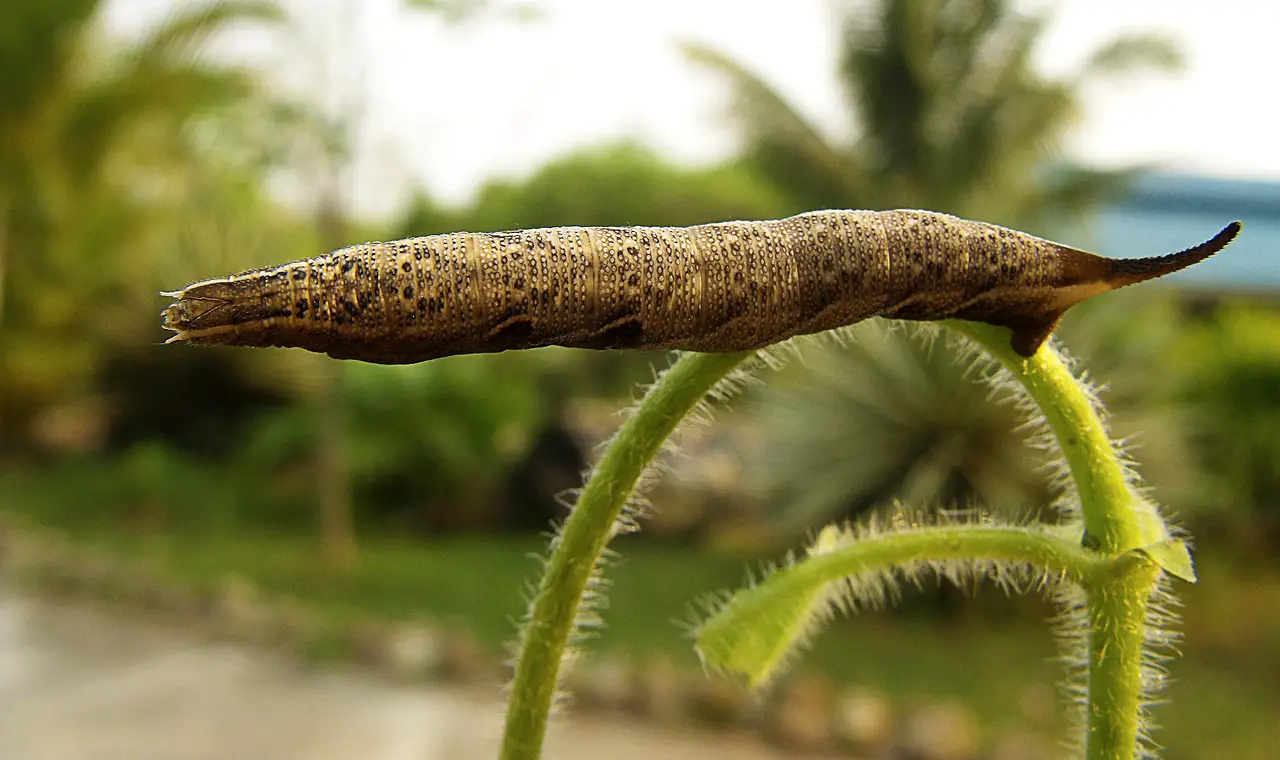The Sycamore tree can be identified by its distinctive bark, which is mottled and peels away in patches, revealing a creamy white inner bark. Its leaves are large, with a palmate shape and pointed lobes, while the fruit appears as round, spiky balls that hang in clusters.
Understanding the Sycamore Tree

The Sycamore tree, scientifically known as Platanus occidentalis, is a majestic species commonly found in North America. It is renowned for its height and impressive canopy, making it a popular choice for landscaping and public parks. The tree can grow up to 100 feet tall and has a broad, spreading form. Its unique features make it easy to recognize throughout the seasons.
One of the most notable characteristics of the Sycamore tree is its bark. The bark undergoes a dramatic transformation as the tree matures. Initially smooth and greenish-brown, it eventually becomes flaky and peels off in large patches, exposing the lighter inner bark. This striking contrast provides an attractive appearance and serves as an important identifying factor.
Identifying Sycamore Tree Bark
When examining the bark of a Sycamore tree, pay attention to the following features:
- Mottled Appearance: The outer bark is characterized by a patchy pattern of brown, gray, and white.
- Flaky Texture: As the bark ages, it begins to peel away in large flakes.
- Thickness: The bark is generally thick and rugged when compared to other tree species.
These characteristics not only help in identifying the Sycamore tree but also distinguish it from similar species. For instance, the London Plane tree has a more uniform bark texture without the same level of flakiness.
Examining the Leaves of the Sycamore Tree
The leaves of the Sycamore are another key identifying feature. They are large and can measure up to 10 inches wide. Here are some specific traits:
- Shape: The leaves have a palmate shape with 5 to 7 lobes.
- Texture: The upper surface is dark green and smooth, while the underside is lighter and somewhat hairy.
- Margin: The edges of the leaves are serrated, adding to their distinct appearance.
During the fall, the leaves turn a vibrant yellow-brown, providing an additional visual cue for identification. This seasonal change enhances their beauty and makes them stand out in contrast to other trees that may still have green foliage.
The Fruit of the Sycamore Tree
The fruit of the Sycamore is equally distinctive and plays a role in its identification. Here are some details about the fruit:
- Appearance: The fruit is a round, spiky ball that typically measures around 1 inch in diameter.
- Color: When immature, they are green, turning brown as they mature.
- Cluster Formation: The fruits grow in clusters, often hanging from long stems that dangle from the branches.
The fruit remains on the tree throughout winter, providing a unique feature that can aid in identification even when other characteristics may not be as visible.
| Feature | Description |
|---|---|
| Bark | Mottled, flaky texture that reveals lighter inner bark. |
| Leaves | Large, palmate shape with serrated edges and lobes. |
| Fruit | Round, spiky balls that appear in clusters on long stems. |
Understanding these aspects of the Sycamore tree can greatly enhance one’s ability to identify this impressive species in various environments. Each feature tells a part of its story and contributes to its unique presence in nature.
Habitat and Distribution of the Sycamore Tree
The Sycamore tree thrives in a variety of environments, primarily preferring moist, fertile soils. It is commonly found along riverbanks, in floodplains, and in rich woodlands. This adaptability allows it to grow in diverse climatic conditions across North America.
In the United States, the Sycamore tree is prevalent in the eastern and central regions. It can be spotted from New England down through the southern states and into parts of the Midwest. Its range extends into Canada, where it can be found in specific areas with suitable growing conditions.
Growth Conditions
For optimal growth, Sycamores prefer the following conditions:
- Soil Type: Well-drained, loamy or sandy soils are ideal, but they can tolerate clay soils as well.
- Moisture: Regular water supply, especially during dry spells, is essential for healthy growth.
- Sunlight: Full sun exposure encourages robust growth and vibrant foliage.
These growth conditions contribute to their large size and expansive canopy, making them valuable for providing shade in parks and yards.
Sycamore Tree Life Cycle
The life cycle of the Sycamore tree is fascinating, as it transitions through various stages over many decades. Understanding this life cycle can give deeper insights into its ecology and longevity.
Seed Germination
The process begins with seed germination. The seeds of the Sycamore tree are small, light, and have a tuft of hair that aids in wind dispersal. Here are some key points about seed germination:
- Timing: Seeds typically germinate in the spring when temperatures rise and moisture levels increase.
- Environment: Seeds require a warm, moist environment to sprout effectively.
- Growth Rate: Once germinated, seedlings can grow rapidly under favorable conditions.
Juvenile Stage
During the juvenile stage, which lasts several years, young Sycamores are characterized by:
- Height: They can grow up to 10-15 feet tall within just a few years.
- Bark Development: The bark remains smooth during this stage before beginning to develop its mature characteristics.
- Leaf Size: Leaves are smaller than those of mature trees but exhibit similar shapes.
Mature Stage
The mature stage of the Sycamore tree is marked by significant growth and reproductive capacity. Here are its defining features:
- Height: Mature trees can reach heights of up to 100 feet.
- Bark Texture: The bark develops a distinct mottled appearance as it matures.
- Reproduction: Mature trees produce large quantities of seeds, contributing to forest regeneration.
Ecological Importance of Sycamore Trees

The Sycamore tree plays a vital role in its ecosystem. Its presence has numerous benefits for wildlife and the environment.
Wildlife Habitat
The tree provides habitat and food for various wildlife species. Some of its ecological contributions include:
- Nesting Sites: Birds often nest in the sturdy branches of Sycamores.
- Food Source: The seeds are a food source for birds and small mammals.
- Shade and Shelter: The expansive canopy offers shade and shelter for various species.
Soil Improvement
The Sycamore tree also contributes to soil health through its extensive root system. Key benefits include:

- Erosion Control: Its roots help prevent soil erosion along riverbanks and other vulnerable areas.
- Nutrient Cycle: Fallen leaves decompose, enriching the soil with organic matter.
This ecological significance underscores the importance of preserving Sycamore trees within their natural habitats. Their contributions extend beyond aesthetic value, playing a crucial role in maintaining a balanced ecosystem.
Common Pests and Diseases Affecting Sycamore Trees
Like many tree species, the Sycamore tree is susceptible to various pests and diseases. Understanding these threats is essential for maintaining the health and vitality of these trees. Identifying early signs of infestation or infection can help in managing these issues effectively.
Pests
Several pests can affect Sycamore trees, leading to potential damage. Here are some of the most common pests:
- Sycamore Lace Bug: This small insect feeds on the underside of leaves, causing yellowing and premature leaf drop. The presence of dark excrement on leaves is a telltale sign of infestation.
- Scale Insects: These pests attach themselves to the bark and leaves, sucking sap and weakening the tree. They can cause wilting leaves and overall decline in health.
- Aphids: These soft-bodied insects feed on the sap of new growth. Their feeding can lead to distorted leaves and an increased presence of sooty mold due to their honeydew excretions.
Diseases
In addition to pests, Sycamore trees face various diseases that can impact their health. Some notable diseases include:
- Sycamore Anthracnose: This fungal disease appears as dark brown lesions on leaves and can cause significant leaf drop in spring. Prolonged wet weather increases the risk of infection.
- Powdery Mildew: This fungal disease manifests as a white powdery coating on leaves. It is more prevalent in warm, dry conditions and can weaken the tree if left untreated.
- Root Rot: Caused by several fungal pathogens, root rot leads to wilting, yellowing leaves, and ultimately tree decline. Poor drainage increases susceptibility to this disease.
Managing Pests and Diseases in Sycamore Trees
Effective management strategies are crucial for keeping Sycamore trees healthy. Here are some approaches to consider:
Regular Monitoring
Regular inspection of Sycamore trees is essential for early detection of pests and diseases. Key practices include:
- Visual Inspections: Check leaves, bark, and branches for signs of pests or disease.
- Seasonal Checks: Monitor trees during peak growing seasons when pests are most active.
Cultural Practices
Implementing good cultural practices can help prevent pest infestations and disease outbreaks:
- Proper Watering: Ensure adequate drainage to prevent root rot. Water trees deeply but infrequently to promote healthy root systems.
- Pruning: Regularly prune dead or infected branches to improve air circulation and reduce disease risk.
- Nutrient Management: Fertilize appropriately to strengthen trees against stressors.
Pest Control Methods
If pests are detected, several control methods can be employed:
- Insecticidal Soaps: These can be effective against soft-bodied insects like aphids and scale.
- Horticultural Oils: Applying oils can suffocate pests while being safe for beneficial insects when used correctly.
- Biological Control: Introducing natural predators, such as ladybugs for aphids, can help manage pest populations.
The Aesthetic Value of Sycamore Trees

The aesthetic appeal of Sycamore trees makes them a favored choice in urban landscapes and natural settings. Their grandeur adds visual interest throughout the seasons.
Seasonal Changes
The Sycamore tree undergoes beautiful transformations throughout the year:
- Spring: New foliage appears bright green, and flowers bloom before the leaves fully expand.
- Summer: The broad canopy provides ample shade, making it a perfect spot for picnics and relaxation.
- Autumn: Leaves turn a stunning array of yellow-brown hues, creating a picturesque landscape.
- winter: The stark silhouette of the tree against a snowy backdrop presents a striking sight.
Landscape Uses
Sycamore trees serve various purposes in landscaping, including:
- Shade Trees: Their large canopy provides significant shade, making them ideal for parks and public spaces.
- Aesthetic Features: The unique bark and leaf shapes add interest to gardens and yards.
- Erosion Control: Their extensive root systems help stabilize soil in areas prone to erosion.
The combination of ecological benefits and aesthetic qualities makes the Sycamore tree a valuable asset to both natural ecosystems and urban environments.
Environmental Impact of Sycamore Trees
Beyond their aesthetic value, Sycamore trees have significant environmental impacts. They contribute to ecosystem health in multiple ways. Their presence supports biodiversity and promotes a balanced environment.
Carbon Sequestration
One of the essential functions of trees is carbon sequestration, and Sycamores play a vital role in this process. Here are some points to consider:
- Carbon Absorption: Sycamore trees absorb carbon dioxide from the atmosphere, helping to mitigate climate change.
- Oxygen Production: Through photosynthesis, they release oxygen, improving air quality for surrounding flora and fauna.
- Long Lifespan: With a lifespan that can exceed 100 years, mature Sycamores continue to sequester carbon over decades.
Water Management
The root systems of Sycamore trees assist in water management within their ecosystems. Key benefits include:
- Water Retention: Their roots help retain moisture in the soil, benefiting surrounding plants and wildlife.
- Flood Mitigation: By absorbing excess rainwater, they play a role in reducing flooding in nearby areas.
- Groundwater Recharge: Healthy trees contribute to the replenishment of groundwater supplies.
Cultural Significance of Sycamore Trees
Sycamore trees have also held cultural significance throughout history. They have been featured in literature, art, and folklore, representing strength and resilience.
Historical Context
In many cultures, Sycamores have been admired for their grandeur. Historically, they have been used for various purposes:
- Timber Use: The wood of the Sycamore tree is strong and durable, making it suitable for furniture and construction.
- Medicinal Uses: Various parts of the tree have been traditionally used for medicinal purposes by indigenous peoples.
- Cultural Symbols: In some cultures, Sycamores symbolize protection and stability due to their robust nature.
Artistic Inspiration
The unique beauty and form of Sycamores have inspired artists and writers alike. From paintings to poetry, they have been a subject of admiration:
- Painters: The striking bark patterns and foliage have made them popular subjects in landscape paintings.
- Writers: Their majestic presence often appears in poetry and prose as symbols of endurance and nature’s beauty.
Final Thoughts
The Sycamore tree is not just a stunning landscape feature; it plays an indispensable role in our ecosystems. Its unique bark, large palmate leaves, and distinctive fruits make it easily identifiable. Understanding its characteristics allows for better appreciation and conservation efforts.
This tree contributes to environmental health through carbon sequestration, water management, and providing habitat for various wildlife species. Its aesthetic appeal enhances urban landscapes while offering essential ecological benefits.
Moreover, the cultural significance of the Sycamore tree enriches our connection to nature. Recognizing its historical importance and artistic inspiration can foster a deeper respect for these magnificent trees. Ultimately, preserving Sycamore trees ensures that future generations can enjoy their beauty and benefits.
